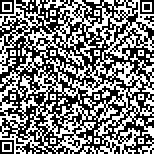| This Paper:Browse 1946 Download 1143 |

码上扫一扫! |
| Recent advances on analysis and design of switched linear systems |
| Z.Sun |
|
|
| (Key Lab of Systems & Control, Academy of Mathematics \& Systems Science, Chinese Academy of Sciences, Beijing 100190, China; School of Mathematical Science, University of Chinese Academy of Sciences, Beijing 100049, China) |
|
| 摘要: |
| A switched linear system is a special hybrid system that consists of a set of linear continuous-time/discrete-time
subsystems and a rule that orchestrates the switching among them. The two-level (execution-supervision) structure makes the switched system theoretically interesting and practically attractive. Under active investigation for more than three decades, huge progress has been made in understanding the dynamical behavior of switched systems. In particular, it has been well recognized that, a switched linear system could produce highly nonlinear \& complex behaviors, for instance, controllability might not imply stabilizability, and stabilizability might not imply the existence of convex (control-)Lyapunov function. Through properly utilizing the rich dynamical behavior, it is possible to improve the system's performance (controllability, stabilizability, adaptability, optimality, among many others) by means of systematic control/switching design. Meanwhile, many powerful tools, such as the common Lyapunov method and the logic-based switching design, have been developed for analysis and control of switched systems, which are also widely applied to other system frameworks like multi-agent systems and cyber-physical systems.... |
| 关键词: |
| DOI: |
|
| 基金项目: |
|
| Recent advances on analysis and design of switched linear systems |
| Z. Sun |
| (Key Lab of Systems & Control, Academy of Mathematics \& Systems Science, Chinese Academy of Sciences, Beijing 100190, China; School of Mathematical Science, University of Chinese Academy of Sciences, Beijing 100049, China) |
| Abstract: |
| A switched linear system is a special hybrid system that consists of a set of linear continuous-time/discrete-time
subsystems and a rule that orchestrates the switching among them. The two-level (execution-supervision) structure makes the switched system theoretically interesting and practically attractive. Under active investigation for more than three decades, huge progress has been made in understanding the dynamical behavior of switched systems. In particular, it has been well recognized that, a switched linear system could produce highly nonlinear \& complex behaviors, for instance, controllability might not imply stabilizability, and stabilizability might not imply the existence of convex (control-)Lyapunov function. Through properly utilizing the rich dynamical behavior, it is possible to improve the system's performance (controllability, stabilizability, adaptability, optimality, among many others) by means of systematic control/switching design. Meanwhile, many powerful tools, such as the common Lyapunov method and the logic-based switching design, have been developed for analysis and control of switched systems, which are also widely applied to other system frameworks like multi-agent systems and cyber-physical systems.... |
| Key words: |

